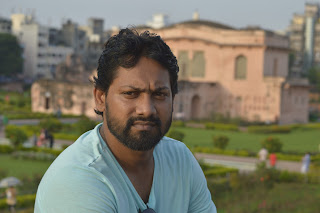Thursday, 14 December 2017
Lalon, (Bengali: লালন) also known as Lalon Sain, Lalon Shah, Lalon Fakir or Mahatma Lalon (c. 1772 – 17 October 1890; Bengali: 1 Kartik, 1179), was a prominent Bengali philosopher, Baul saint, mystic, songwriter, social reformer and thinker from Kushtia district of Bangladesh'. Considered as an icon of Bengali culture, ...
Monday, 11 December 2017
Colombo, Sri Lanka
Bambalapitiya
is a neighbourhood of Colombo, Sri Lanka. The area, numbered Colombo 4, spans about one and a
half kilometres of the Galle
Road. The western suburb is bordered by the Indian Ocean.
The neighbourhood is bordered to the east by Havelock Town,
to the north by Kollupitiya, and to the south by Wellawatte.
 |
| Bambalapitiya, Colombo, Sri Lanka |
 |
| Bambalapitiya, Colombo, Sri Lanka |
 |
| Bambalapitiya, Colombo, Sri Lanka |
 |
Galle Road, Colombo, Sri Lanka |
 |
Galle Road, Sri Lanka |
Friday, 8 December 2017
The beach in Cox's Bazar is an unbroken 120 km (75 mi) sandy sea beach with a gentle slope, making it the second longest sea beach in the world after Praia do Cassino, in Brazil.
The name Sonargaon came as
the Bangla version of the ancient name Suvarnagrama. Buddhist ruler
Danujamadhava Dasharathadeva shifted
his capital to Suvarnagrama from Bikrampur sometime in
the middle of the 13th century. In early 14th
century, Bauddha ruling in this area ended when Shamsuddin
Firoz Shah(reigned 1301–1322) of Lakhnauti occupied and
annexed it to his kingdom.
Tuesday, 14 November 2017
Subscribe to:
Posts (Atom)

















